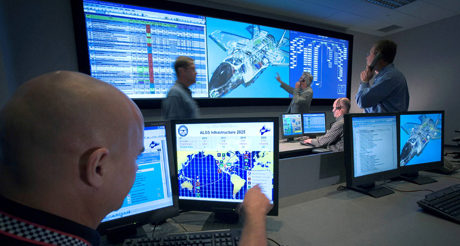With the F-35 combat aircraft poised for operational deployment, a new report from the Government Accountability Office (GAO) highlights risks associated with the programme’s Autonomic Logistics Information System (ALIS). The backbone of the F-35 sustainment network, ALIS is a system of systems supporting operations, mission planning, supply-chain management, maintenance and other processes.
To put the ALIS concerns in perspective, sustainment costs comprise the vast majority of the U.S. DoD’s $1.3tn cost estimate. A DoD-commissioned plan found that schedule slippage and functionality problems with ALIS could lead to $20-100bn in additional costs.
According to the GAO report, the Department of Defense (DOD) does not have a plan to ensure that ALIS is fully functional as key programme milestones approach. ALIS users, identified several issues that could result in operational and schedule risks. The GAO highlights the following:
- ALIS may not be deployable: ALIS requires server connectivity and the necessary infrastructure to provide power to the system. The Marine Corps, which often deploys to austere locations, declared in July 2015 its ability to operate and deploy the F-35 without conducting deployability tests of ALIS. A newer version of ALIS was put into operation in the summer of 2015, but DOD has not yet completed comprehensive deployability tests.
- ALIS does not have redundant infrastructure: ALIS’s current design results in all F-35 data produced across the U.S. fleet being routed to a Central Point of Entry and then to ALIS’s main operating unit with no backup system or redundancy. If either of these fail, it could take the entire F-35 fleet offline.
The GAO says that the DoD is attending to individual issues as they arise but that, by continuing to respond to issues on a case-by-case basis rather than in a holistic manner, there is no guarantee that the highest risks will be addressed by the start of full-rate production in 2019. This could result in further schedule and development delays, which could affect operations and potentially lead to cost increases.
The DoD has estimated total ALIS costs to be about $16.7bn over the F-35’s 56-year life cycle, but the GAO says that additional analyses and the inclusion of historical cost data are needed to increase the credibility and accuracy of that estimate. Programme officials told GAO that if ALIS is not fully functional, the F-35 could not be operated as frequently as intended, but without uncertainty and sensitivity analyses, it is unclear exactly what effect this would have on costs.

